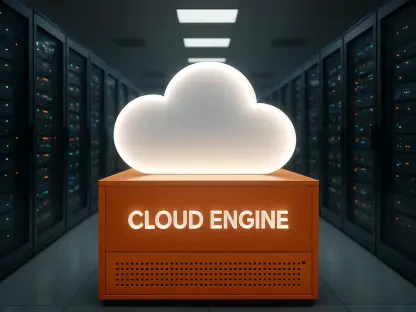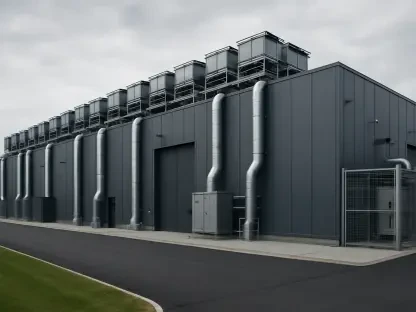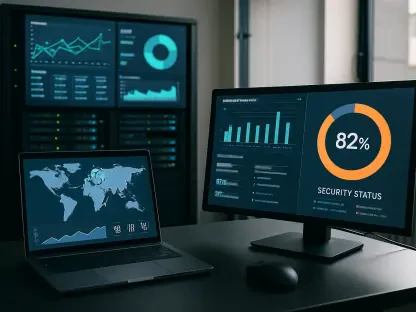In an era where enterprises are increasingly juggling multiple cloud environments and seeking robust alternatives to traditional virtualization platforms, Nutanix has emerged as a transformative force in the IT landscape. With businesses facing mounting complexity in managing hybrid and multi-cloud setups, alongside a growing need to pivot away from legacy solutions like VMware, Nutanix is carving out a significant niche. The company’s strategic vision, as shared by CTO Manosiz Bhattacharyya during a recent Nutanix Cloud Day event, underscores a commitment to simplifying operations across diverse platforms while addressing modern IT challenges. This approach not only tackles the intricacies of multi-cloud management but also positions Nutanix as a compelling choice for organizations reevaluating their virtualization strategies. By focusing on software-defined infrastructure and innovative tools, Nutanix is reshaping how enterprises think about cloud consistency and migration, setting a new standard for flexibility and efficiency in a rapidly evolving digital world.
Evolving Beyond Hyperconverged Infrastructure
Nutanix has long been recognized for its pioneering work in hyperconverged infrastructure (HCI), but its evolution into a broader software-defined infrastructure model marks a significant shift in its mission. This transition enables seamless operations across hybrid and multi-cloud environments, integrating with major platforms like AWS, Azure, and Google Cloud Platform. The emphasis here is on creating a unified operational framework that minimizes the complexity of managing disparate cloud ecosystems. Enterprises benefit from a consistent experience, reducing the need for extensive retraining of IT staff when shifting between environments. This focus on operational harmony addresses a critical pain point for businesses striving to maintain efficiency while scaling their cloud presence. By prioritizing simplicity, Nutanix is helping organizations navigate the often turbulent waters of multi-cloud adoption with greater confidence and control, ensuring that technology serves as an enabler rather than a barrier to growth.
Another key aspect of this evolution is the adaptability of Nutanix’s infrastructure to diverse workloads and applications. Unlike traditional setups that often struggle with compatibility across platforms, the company’s software-defined approach offers a flexible foundation that can support a wide range of enterprise needs. This means businesses can deploy both legacy systems and modern applications within the same cohesive environment. Such versatility is particularly valuable in today’s fast-paced market, where the ability to pivot quickly between different technological demands can be a competitive advantage. Nutanix’s strategy also reflects a deep understanding of the varied challenges enterprises face, from maintaining uptime to optimizing resource allocation. By delivering a platform that bridges the gap between old and new, Nutanix ensures that organizations are not forced to choose between innovation and stability but can achieve both in tandem.
Pioneering Cloud-Native and Database Solutions
Nutanix is also making significant strides in embracing cloud-native architectures, catering to the growing trend of containerized workloads through initiatives like Project Beacon and Cloud-Native AOS (CN-AOS). While traditional enterprise applications find robust support through NC2 for infrastructure resilience, CN-AOS specifically targets modern, container-based setups by ensuring data mobility and consistent storage functions across Kubernetes platforms. This dual-pronged approach highlights a nuanced understanding of the spectrum of application needs in today’s IT environments. By addressing both legacy and cutting-edge requirements, Nutanix positions itself as a versatile partner for enterprises at any stage of their digital transformation journey. This adaptability not only future-proofs business operations but also aligns with the industry’s shift toward more agile, scalable solutions that can keep pace with rapid technological advancements.
In parallel, Nutanix is expanding its footprint in database services, supporting both traditional VM-based databases and Kubernetes-native options such as MongoDB, PostgreSQL, Redis, and Elasticsearch. A standout feature of this offering is the automation of critical database administration tasks like optimization and patching, which streamlines operations and boosts efficiency. This move taps into the broader industry trend of shifting toward containerized deployments, where ease of management is paramount. By reducing the manual overhead associated with database upkeep, Nutanix enables IT teams to focus on strategic priorities rather than routine maintenance. This focus on operational efficiency mirrors the demands of modern enterprises that seek to maximize productivity while minimizing downtime, demonstrating how Nutanix is attuned to the evolving needs of its customer base and the broader technology landscape.
Positioning as a VMware Competitor
A major driver of Nutanix’s growth is its emergence as a viable alternative to VMware, particularly through tools like Nutanix Move, which facilitates VM migration. The process, while technically automatable, requires meticulous planning to account for business processes, third-party integrations, and governance frameworks. This comprehensive approach to migration underscores the importance of addressing both technical and operational dimensions to ensure a smooth transition. For many enterprises, the shift away from VMware represents not just a technological change but a strategic realignment, and Nutanix’s emphasis on thorough preparation resonates with organizations undertaking such transformations. The interest shown by attendees at Cloud Day events further validates the demand for well-supported migration paths, highlighting Nutanix’s role as a trusted partner in navigating these complex journeys.
Beyond migration tools, Nutanix differentiates itself with a customer-centric philosophy that prioritizes long-term success over quick fixes. The company’s solutions are designed to integrate seamlessly into existing environments, minimizing disruption while maximizing value. This is particularly appealing to businesses wary of the risks associated with large-scale transitions. By offering detailed guidance and robust support, Nutanix addresses the hesitations that often accompany a move away from established platforms like VMware. Additionally, the focus on a unified control plane across cloud environments ensures that post-migration operations remain consistent and manageable. This strategic alignment with enterprise needs not only strengthens Nutanix’s position in the market but also sets a benchmark for what organizations should expect from a virtualization alternative in terms of reliability and foresight.
Addressing Sovereignty and Security Challenges
In response to geopolitical concerns, Nutanix is prioritizing sovereign cloud and air-gapped solutions, particularly for markets in Europe and Asia where data sovereignty is a pressing issue. These solutions aim to eliminate external dependencies, allowing for fully isolated operations. Plans to bring SaaS services like Nutanix Central and Data Lens on-premises by the end of this year further enhance this capability, offering features such as ransomware detection and centralized management. This focus on security and independence reflects a growing demand among enterprises to maintain control over sensitive data in geopolitically sensitive regions. By addressing these concerns head-on, Nutanix demonstrates a proactive stance on compliance and protection, ensuring that businesses can operate confidently within strict regulatory frameworks without sacrificing functionality.
Moreover, the emphasis on isolated environments extends beyond mere compliance to encompass broader security benefits. Air-gapped solutions, for instance, provide an additional layer of defense against cyber threats, a critical consideration in an era of escalating ransomware attacks. Nutanix’s commitment to integrating advanced security features into its offerings speaks to an understanding of the multifaceted risks enterprises face today. This approach not only safeguards data but also builds trust with customers who prioritize resilience in their IT infrastructure. By aligning its innovations with the urgent need for robust security measures, Nutanix is positioning itself as a leader in addressing some of the most pressing challenges in the global IT landscape, ensuring that businesses can thrive even in the face of complex regulatory and cybersecurity demands.
Envisioning AI-Driven Infrastructure Management
Looking ahead, Nutanix is exploring the potential of AI-driven infrastructure management, where agentic systems could autonomously configure environments based on user needs. Although not currently implemented, this vision points to a transformative trend in IT operations, moving beyond traditional API-driven automation to more intuitive, user-focused systems. The prospect of such technology promises to redefine how enterprises manage resources, potentially reducing manual intervention and accelerating decision-making processes. This forward-thinking approach aligns with broader industry shifts toward leveraging artificial intelligence to enhance efficiency, offering a glimpse into a future where infrastructure adapts dynamically to business demands without constant oversight.
The implications of AI integration extend to enhancing user experience and operational agility across multi-cloud setups. By envisioning systems that anticipate and respond to requirements in real time, Nutanix is laying the groundwork for a paradigm shift in how IT environments are managed. This focus on innovation ensures that the company remains at the forefront of technological advancements, ready to meet the evolving expectations of enterprises. While still in the conceptual stage, the exploration of AI-driven solutions signals a commitment to pushing boundaries and addressing future challenges proactively. As the industry continues to evolve, Nutanix’s dedication to pioneering such advancements will likely play a pivotal role in shaping the next generation of cloud and infrastructure management strategies.
Reflecting on Strategic Milestones
Looking back, Nutanix demonstrated remarkable foresight in addressing the complexities of multi-cloud environments and the growing demand for VMware alternatives. The company’s journey showcased a steadfast commitment to simplifying enterprise operations through software-defined infrastructure, ensuring consistency across diverse platforms. Initiatives like cloud-native solutions and database automation marked significant strides in meeting modern IT demands, while migration tools provided critical support for businesses transitioning from legacy systems. Additionally, efforts to tackle data sovereignty and security through sovereign cloud solutions responded effectively to geopolitical challenges. As enterprises navigated these past transformations, Nutanix stood out by envisioning AI-driven management, hinting at revolutionary possibilities. Moving forward, organizations should consider adopting such innovative frameworks, prioritizing seamless integration and robust planning to stay ahead in an ever-changing digital landscape.









